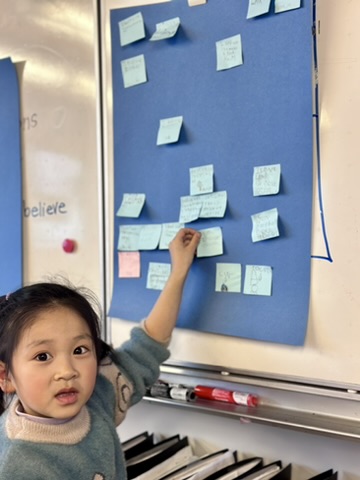Beliefs
There are many things that we believe in and think that exist or are true.
These things shape and mold us into who we are.
The word "BELIEF" is a big idea and is not easy to explain to the preschoolers.
So, I started of with a 'word bank'.
They threw out words or ideas that they can make, connect or relate with from the word BELIEFS.
lie, believe, leaf, tree, bell, bees...
Then, the word belief was used in a sentence with context clues to help them understand. We realize that the word BELIEVE was the closest word related to it.
We came up with a class definition.
"Beliefs are ideas or things we believe in.
It is what we think is real or it is because we see it.
Our beliefs changes and it may not be the same with everyone's."
After having understood what it meant, they did an exercise wherein the preschoolers wrote down on post its all the ideas or things that they believe in.
It was such a fun exercise and everyone was so excited!
We read each of the post its and together we decided to put our thumb up if it is similar to our own belief, at the side if we are not yet sure or thumbs down if it is not our belief.
They saw that they have a lot of similarities and differences with others beliefs.
In the coming weeks, we will explore how these similarities and differences make us unique and to celebrate who we are.
They spent a lot of thinking this week so I gave the preschoolers some 'tickle' time as I traced both their hands and arms. They colored, decorated, made patterns to represent themselves.
In connection with these hands, I will present to them these questions...
Can these hands do a lot for you? What? How?
How are these hands an important part of who we are and how we see ourselves?
How do our families' traditions, cultures, beliefs passed on from one hand to the other?
So moms and dads how are cultures, traditions and beliefs passed on to you and now to them?
You can share stories with your child some of your family beliefs, celebrations, cultures, traditions, and values.











Comments
Post a Comment